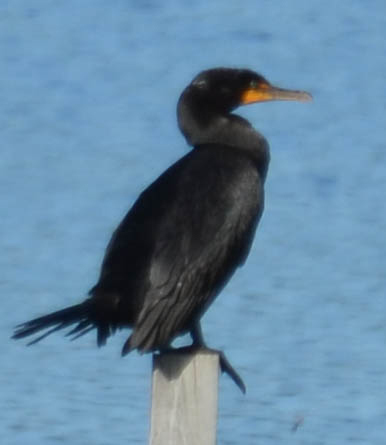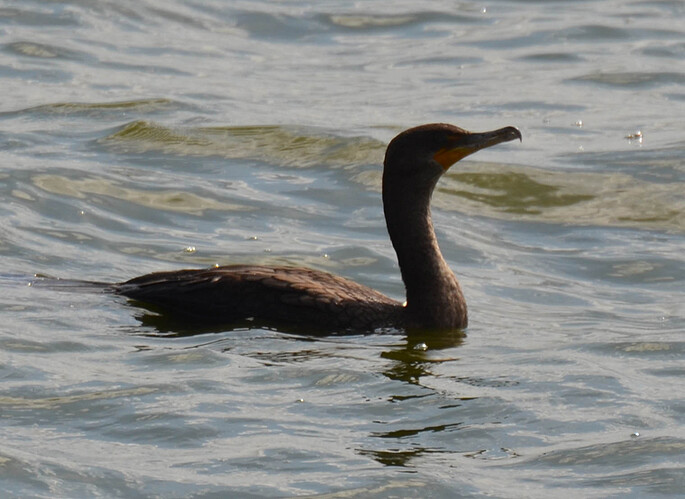Could be if a rose hip floated off across the water to Gower!!!
Busy helping a group of people clearing scrub from an island today so little oportunity for photo’s.
Crëyr bach - Little egret (distant and not a good photo but it was out of water so we can see it’s feet, apparently in some countries it is known as the yellow footed egret) (Crëyr traed melyn).
Cheers J.P.
The weather has improved again (hooray).
Pryf ichnewmon s.p. - Ichneumon fly s.p. (not sure if i have imaged this one before, but it did stop long enough for a quick photo).
Chwydden geirios - cherry gall (on oak leaf - dail derwen).
Seren ddaear cyffredin - common earth star (already appearing).
Ffwng cwrel s.p. - Coral fungus s.p. (already plenty about).
Madfall - Common lizard (i have a spot where i can sit and watch these, they seem to have become more curious over time and the lens really was as close as the photo suggests).
Cheers J.P.
I’m picking your brains again!!! (Sorry) But I thought these were ‘oak apples’. Is it another name for the same thing or, if not, what is the difference?? 
Diolch am dy gwestiwn di. Mae’n diddorol iawn.
Afal dewrw - oak apple, (up to 70mm across, relativly soft, grows from bud point on stem).
Chwydden geirios - cheery gall (smaller, harder, grows on underside of leaves)
both caused by different species of gall flies/wasps.
There are other galls on oak’s and of course other trees, strangely while taking the cherry gall photo i was thinking about the number of possible species hosted by an oak tree. (big number i suspect).
Edit: i have been trawling the net a little for information on this subject and find there are currently over 70 species of gall know to appear on Oak’s in Britain (all we need is time to find and photograph them all plus the Ichnewmons that prey on them, and so every subject grows).
Cheers J.P.
Colourful fungi - Ffyngau lliwgar
Twyllwr piws - Amethyst deceiver (The cap can look the same colour as the gills in this picture, they seem to fade in sunlight).
Cortinarius s.p.(i suppose this one could be mistaken for the one above, this one is chunkier and the give away when it opens the gills are closer spaced and go rust colour as the spores mature).
This family of fungus seem be listed between inedible to poisonous, we are moving to the time of year when a few people will die form eating the ‘wrong’ fungi. bod yn ofalus rwan.
A, un gwyfyn.
Brychan cyffredin - common carpet.
Cheers J.P.
I would never dare eat anything I wasn’t 100% sure of and I certainly distrust the amethyst deceiver!!! In fact, one look, and before reading it’s name and my mind was screaming: “Poison!!!” 
That’s the point of the above post (the amethyst deceiver, is considered good by many, even eaten raw in salads), The corintarius s.p. (many and varied) is a definite no no, but i wouldn’t chance any fungus found in the wild.
Amanita cwridog - The blusher (damaged parts turn red).
Cheers J.P.
Sorry @henddraig, i didn’t find an Afal derw - Oak apple todyay (maybe a bit late in the season) but here are what i did find.
for the top down.
Marblen coed - Marble gall. (on stem of twig, i believe this is the one that used to be used in Ink manufacture).
Chwydden geirios - Cherry gall (on underside of Oak leaf).
Chwydden goronog - Knopper gall (on acorn / cup).
Soser fach y dderwen - Spangle gall ( again underside of leaf).
The Autumn sunshine brought out some old favorites.
Gweirloyn brych - Speckled wood.
Mursen las cyffredin - Common blue damselfly.
Cheers J.P.
You educate me daily, John!!! I honestly thought all galls were round and smooth!! The variety of appearance is amazing!! I wouldn’t have realised they were galls!!!
Diolch yn fawr for today’s lesson!!! 
It’s me that’s learning daily, so thanks for the interest (i never know where questions will take me).
If i can pepper the learning with Welsh words then i’m learning twice.
Going on with yesterday’s finds (pethau, wnes i dod o hyd ddoe) , it think i have an ID for one more.
Smooth spangle gall (looks like a tiny dish).
And today just maybe a new species on Alder.
Gwernen cynffonnau wyn bach gwrywaidd. (male catkins on Alder) they are normally straight.
Cheers J.P.
This morning i went by train twelve miles away where i can walk around a wildlife reserve (lake) and then ramble home along the canal path, i saw rather a lot of interesting things and will post a few.
Pluen / plu - Feather / feathers. (yep a humble feather caught my eye and seemed to pretty to ignore).
Hopys - Hops (yep hops appear to be growing wild in a hedge).
It just would not be a day without a mystery insect (trychfilod), the narrow waist suggest an Ichnewmon but i’m not at all sure).
Tatws - Potato (yep a potato in flower beside the canal).
Golden bloomed grey longhorn beetle (chwilen gyda enw hir yn Saesneg).
Copyn y goes - Garden spider.
Click on images for full size, i’m really pleased with the beetle as it’s only the second time i have seen one.
Cheers J.P.
- Note my new picture, which I owe to @tatjana!!!
- I suspect someone found a sprouting potato on their boat, didn’t fancy it, and tossed it overboard!!! I’m not sure I’ve seen tatws growing by our canal, but it wouldn’t surprise me!!

That Tatjana is a little angel often.
Which canal are you by, it may be one i walked in 2010.
Soser fach y dderwen arall. - looks like, the silk button spangle gall.
Neidr gantroed - Centipede.
Cheers J.P.
Cwrw, coffii, neu rwybeth gwahanol - beth eu ti’n yfed? …
On the sirious note (oh but that upper question was sirious too  ): Diolch yn fawr iawn. Bydda i’n cofio hyn.
): Diolch yn fawr iawn. Bydda i’n cofio hyn.
Just, keep doing what you have been doing, worry about drinks in the future (yn y difodol).
mae’r 'na ychydig o ffwng siap wahanol i’w weld rwan. (there are a few fungi of different shapes to see now.
Ysgwydd y fedwen - Birch polypore (mae un ffwng braidd yn hawdd i dod o hyd - it’s one fungus quite easy to find) . Hard like leather with a white pore surface on underside.
Inc cap s.p. - ink cap s.p (member of the coprinus family, delicate pleated surface on these little ones, black gills on underside).
Hankea s.p. possibly Hankea utriformis (sorry no welsh name, yet again a different form of fungi, more like a ball on a pedestal , the spores mature inside then the ball splits to release them.
Cap tyllog craciau coch - Red cracked boletus (medium size (braidd yn cyffredin - quite common), underside yellow pores like foam.
Cheers J.P.
Mulfran, Morfran, Bilidowcar: Cormorant
I found several words for Cormorant. I did not find one for the Anhinga which is a similar bird. But there isn’t really an English word either since Anhinga is the Latin. I will post of pic of one anyway because the two are often confused.

Double-crested Cormorant (Phalacrocorax auritus)
Anhinga (Anhinga anhinga)
Cormorants are often seen holding their wings out while perched. They share this trait with Anhingas which is why they are often confused. They do this because they need to dry their wings before they can fly. Most birds have oils in their feathers that prevent them from getting wet. Cormorants and Anhingas do not have these oils. This makes them better swimmers. The oils make birds more buoyant. Without the oils they can stay submerged more easily in order to catch fish.
The easiest way to tell the difference is the beak. Cormorants have a hooked beak while the Anhinga has a pointed one. Ahingas also have a longer more slender neck.
Interesting Craig.
Here i see the (Mulfran) Cormorant often, they were considered a coastal bird but have now moved onto inland waterways.
I know from books we also have the (Mulfran werdd) Shag, which i have not knowingly seen. From a quick look at a distribution list, Wales would be a good place to see one.
For anyone who may be interested in welsh birds, there is a Monday to Friday bird course at Plas tan y bwlch Starting February 8th 2016.
Cheers J.P.
I just watched a documentary on the S4C International site about the filming techniques used for the series Natur Cymru. It showed one of these. The program has subtitles in English and Cymraeg so I went back over it to try and write down as much nature vocabulary as I could. I can post the list once I finish it.
As soon as I saw @craigf’s post, I thought of shags, which we often saw on the Gower coast…We saw cormorants too, but shags more often. Being an ignoramus, is a shag the anhinga??? (That word makes me think of heart attacks!!!)
I agree with you about @tatjana’s helpfulness!!!
‘Our’ canal is the Crinan canal, famous for the Puffer - a steam boat plying the Clyde and the West Coast!! There was a comedy series about it on TV.
We are also near the introduced beavers. No - don’t expect pics, They are nocturnal!!! 



